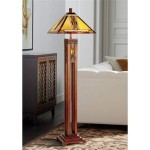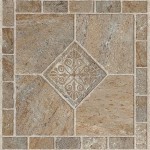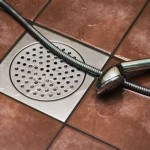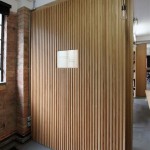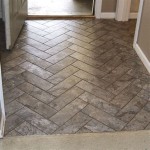Outdoor Hot Tub Flooring Options
An outdoor hot tub is an excellent addition to any backyard, offering relaxation and enjoyment year-round. However, the area surrounding the hot tub requires careful consideration. The flooring around your hot tub needs to be both aesthetically pleasing and functional, providing a safe, stable, and slip-resistant surface for hot and cold conditions. This article explores various flooring options suitable for outdoor hot tub areas, outlining their benefits and drawbacks to help you make an informed decision.
1. Decking
Decking is a popular choice for hot tub flooring, offering a classic and durable surface. Wood decking, such as cedar, redwood, or composite materials, creates a warm and natural feel. These materials are naturally resistant to moisture and decay, making them ideal for outdoor use. The raised surface of decking provides excellent drainage, preventing water from pooling around the hot tub.
Decking can also be customized with different colors, finishes, and designs. However, wood decking requires regular maintenance to ensure durability and longevity. The wood needs to be sealed or stained periodically to prevent rot and weathering. Composite decking, while offering low maintenance, can be more expensive than traditional wood.
2. Pavers
Pavers offer a wide range of design options and are a versatile choice for hot tub flooring. Pavers come in various materials such as stone, concrete, brick, and even recycled glass. These materials can create a wide range of aesthetics, from sleek and modern to rustic and natural. Pavers are durable, weather-resistant, and easy to maintain. The gaps between pavers allow for drainage, preventing water from accumulating.
A major advantage of pavers is their ease of installation. They can be arranged in various patterns and designs to personalize the area. Additionally, damaged pavers can be easily replaced without disrupting the entire surface. However, pavers can be more expensive than some other options, and installation may require professional help for larger areas.
3. Concrete
Concrete provides a robust and long-lasting solution for hot tub flooring. This material is highly durable, resistant to moisture and temperature fluctuations, and can withstand heavy foot traffic. Concrete can be customized with decorative finishes such as stamped patterns, colored aggregates, or exposed aggregate finishes, providing stylistic options.
Concrete is relatively inexpensive to install, especially compared to pavers or decking. However, concrete can be prone to cracking if not properly installed. The surface can also become slippery when wet, necessitating the application of non-slip coatings to ensure safety. Additionally, concrete requires sealing to prevent staining and water damage.
4. Gravel
Gravel is a low-maintenance and cost-effective option for hot tub flooring. The porous nature of gravel allows water to drain quickly, preventing water from accumulating around the hot tub. It is also a natural and aesthetically pleasing choice that blends well with outdoor settings. Gravel is readily available and easy to install, making it a popular choice for DIY projects.
However, gravel can be uncomfortable to walk on barefoot, especially in the winter. It may also require periodic replenishment as gravel can be easily displaced by foot traffic. Additionally, gravel may not be the ideal choice for areas with heavy foot traffic or where maintenance is a concern.
5. Artificial Turf
Artificial turf provides a soft and comfortable surface around your hot tub, making it a good choice for barefoot use. It is also low maintenance and requires minimal watering. Artificial turf can be installed in various colors and textures, making it a visually appealing option. Its water-permeable nature allows for drainage, preventing water from pooling.
While artificial turf provides a comfortable and aesthetically appealing surface, it may not be suitable for all climates. It can get hot under direct sunlight in warmer areas and can fade over time with prolonged exposure to UV rays.
6. Rubber Mats
Rubber mats are a practical and affordable option for hot tub flooring. These mats are specifically designed for outdoor use and are generally resistant to water, UV rays, and temperature changes. Rubber mats provide excellent traction and are easy to clean, making them a safe and practical choice.
Rubber mats are relatively inexpensive and come in different colors and designs, offering some degree of visual appeal. However, they are not as aesthetically appealing as other options and may not be suitable for areas with a lot of foot traffic. They can also be prone to tearing or splitting if exposed to sharp objects.
Choosing the right hot tub flooring is essential for both functionality and aesthetics. This article outlines various options, emphasizing their benefits and drawbacks to help you make an informed decision. Ultimately, the ideal flooring material for your hot tub area depends on your personal preferences, budget, and the specific needs of your outdoor space.

What Is The Best Hot Tub Base In 2025 6 Great Ideas

17 Backyard Hot Tub Privacy Ideas For A Serene Spa Timbertech

Best Hot Tubs And Spas For Your Outdoor Space The Home

The Best Hot Tub Foundation 6 Ways To Support Your Spa Koval Building Supply

What Is The Best Hot Tub Base In 2025 6 Great Ideas

Jacuzzi Outdoor Ideas Small Backyards

Best Hot Tubs And Spas For Your Outdoor Space The Home

Should I Put My Hot Tub On A Deck Master Spas Blog

Wood Teak Flooring Interlocking Deck Tiles Pool Patio Hot Tub Spa Garden Outdoor

Best Hot Tubs And Spas For Your Outdoor Space The Home

